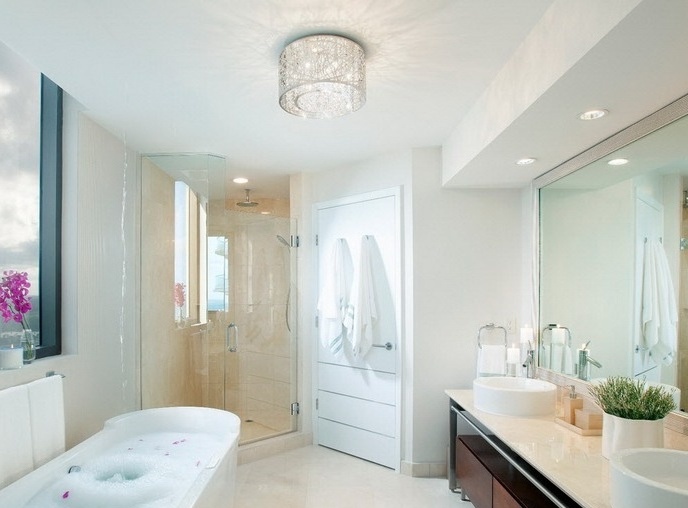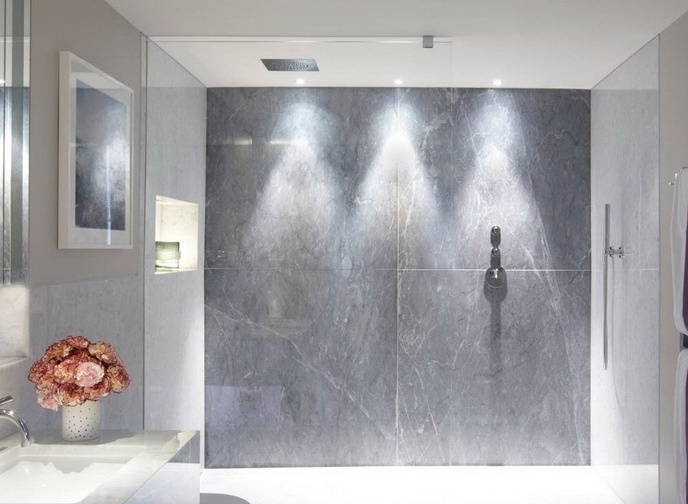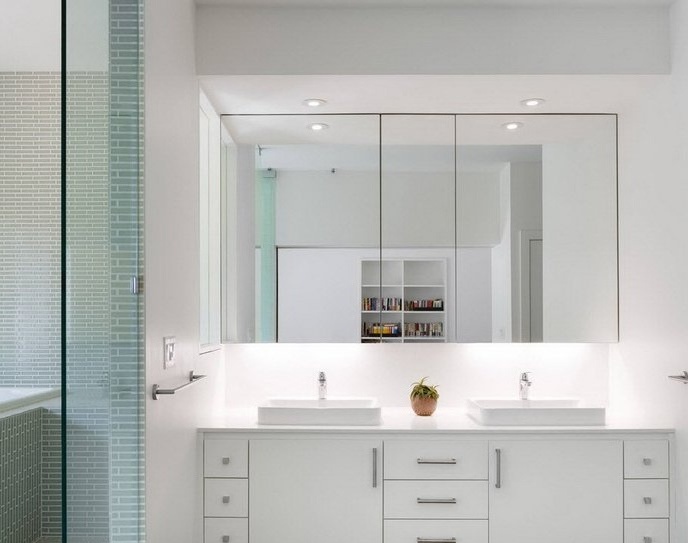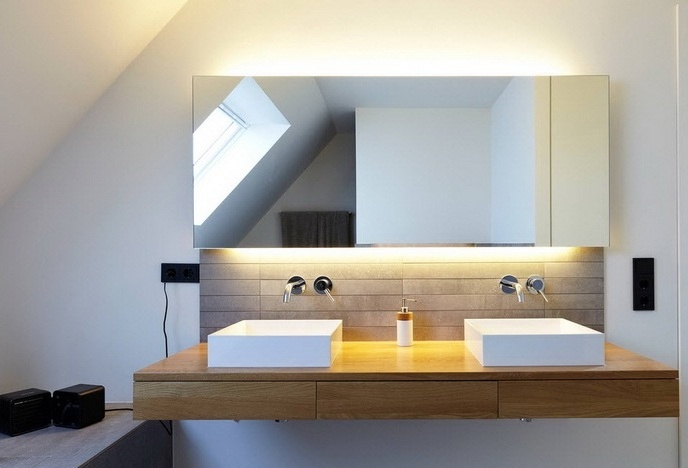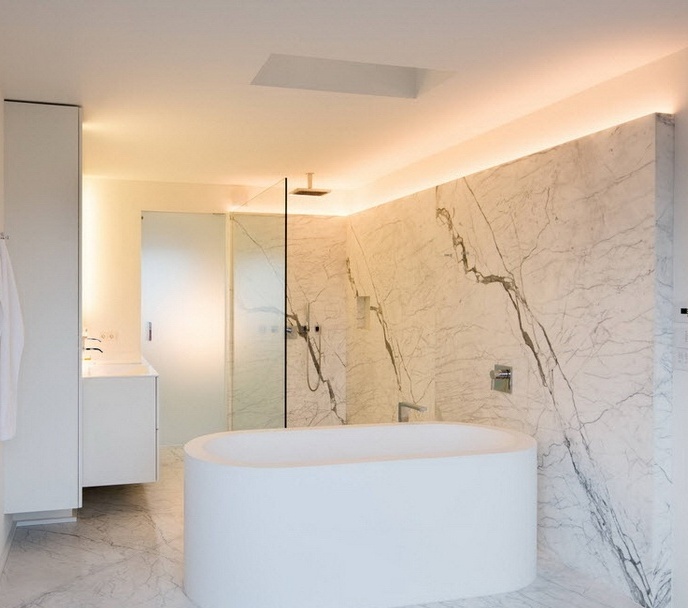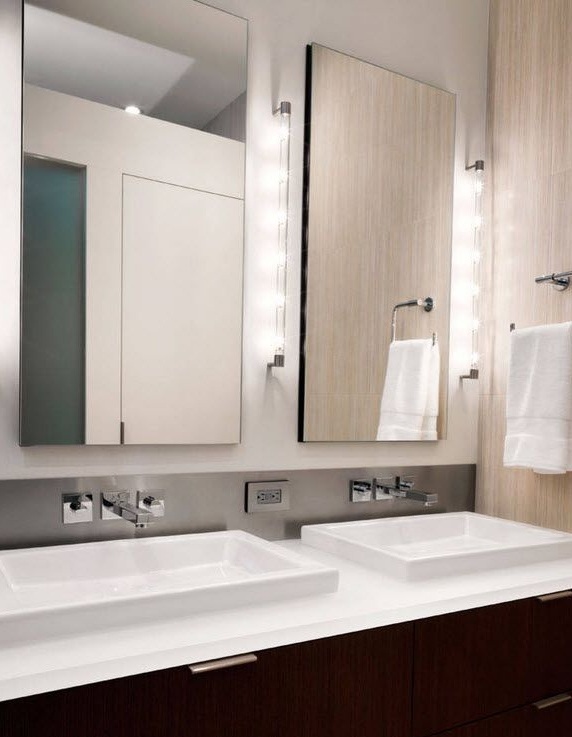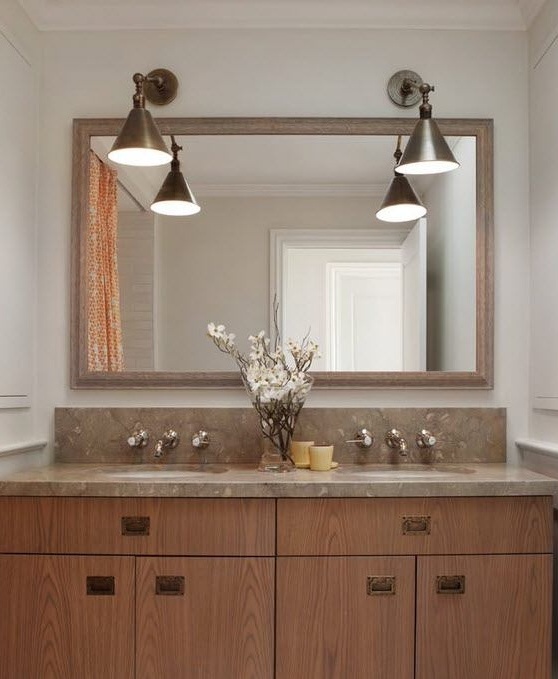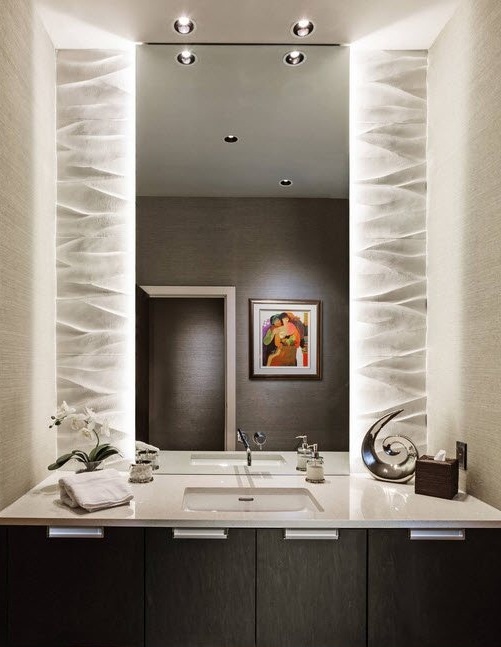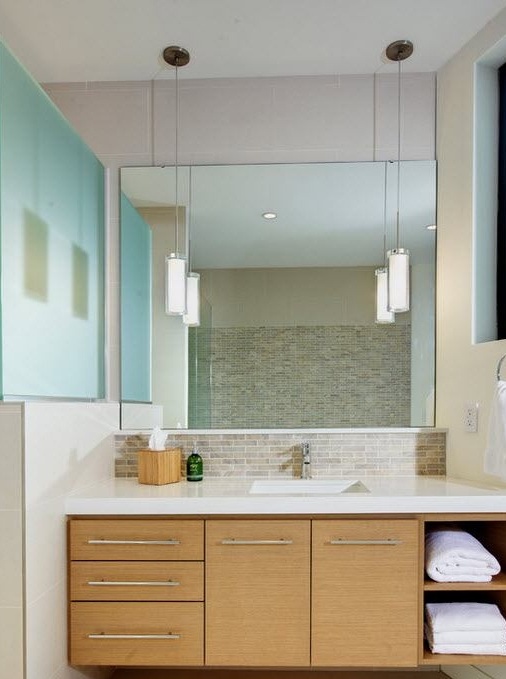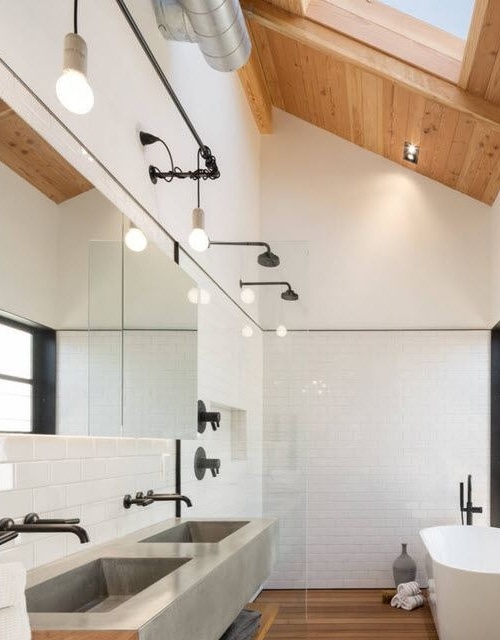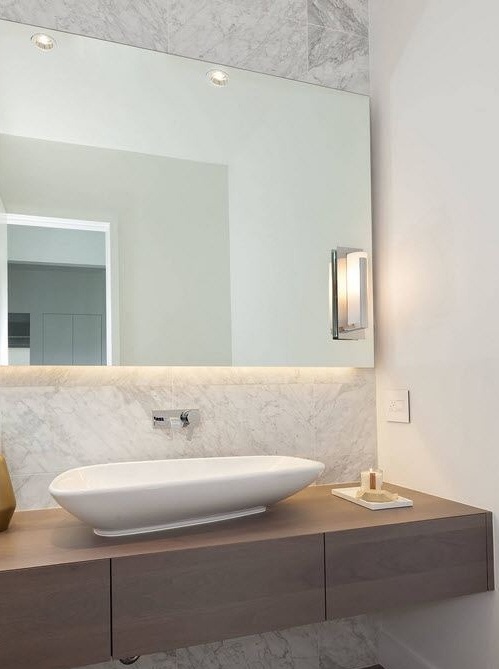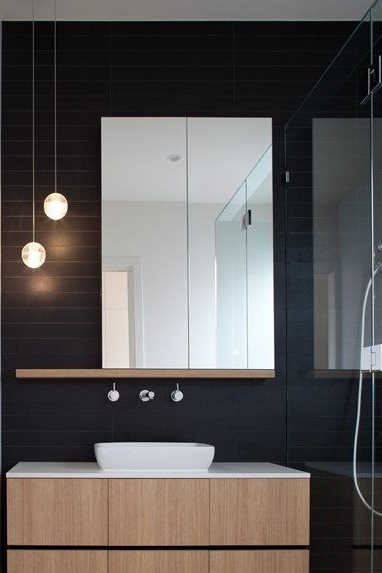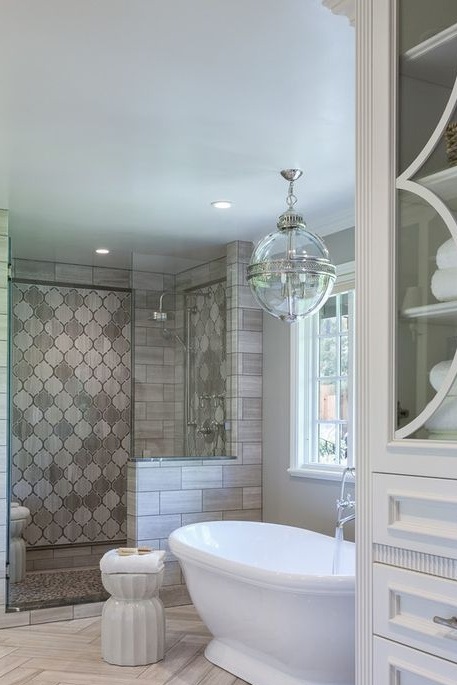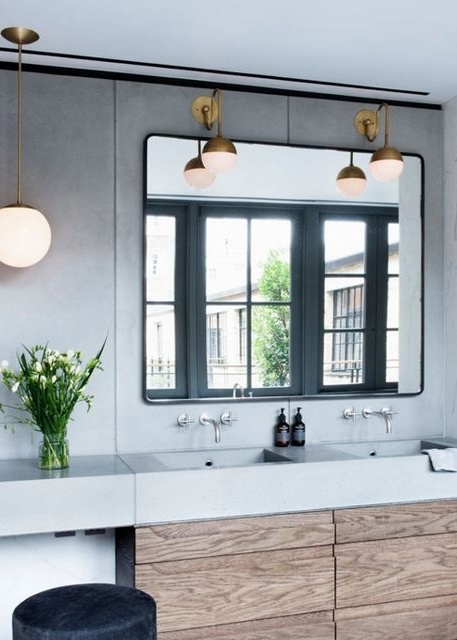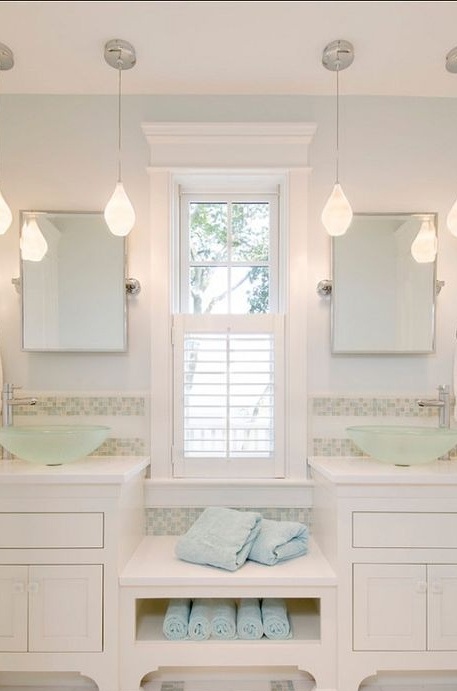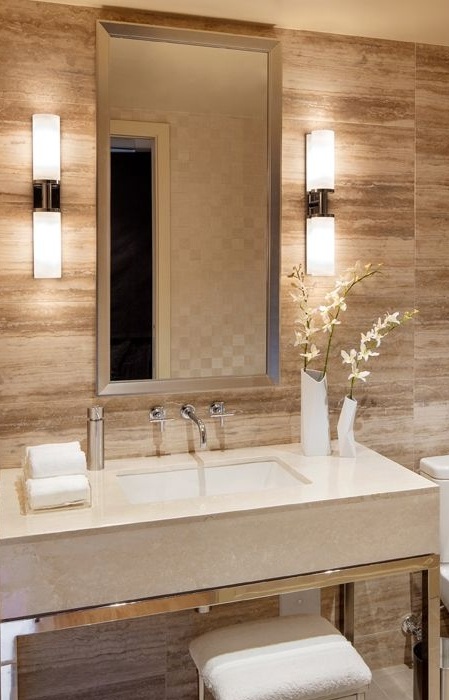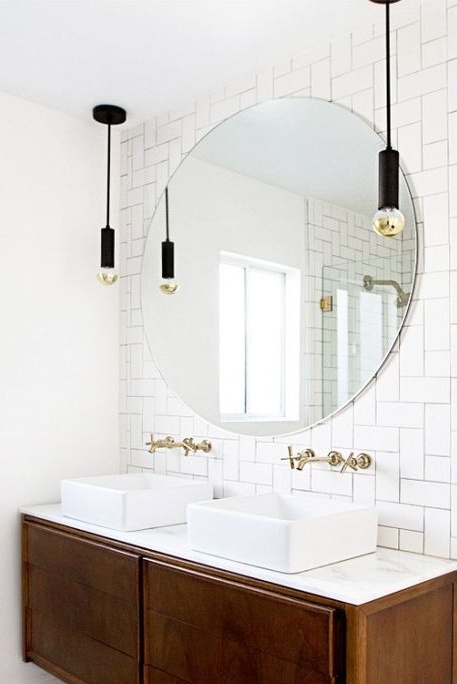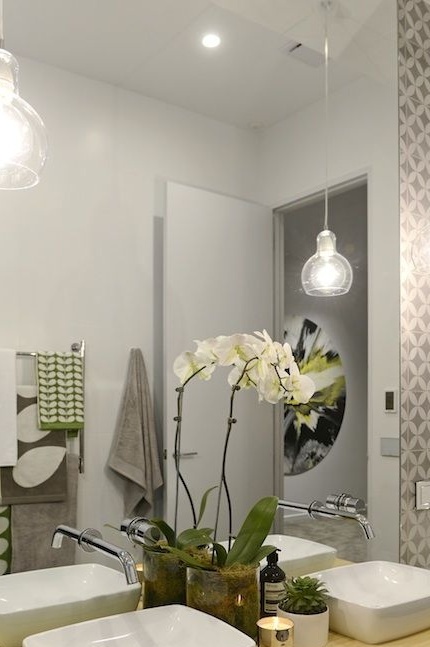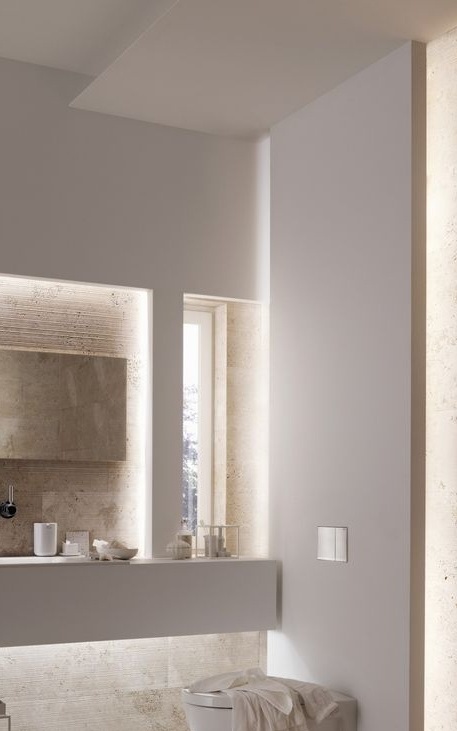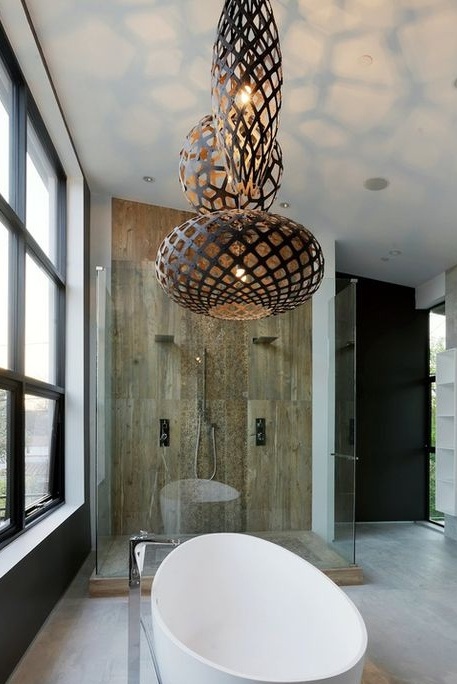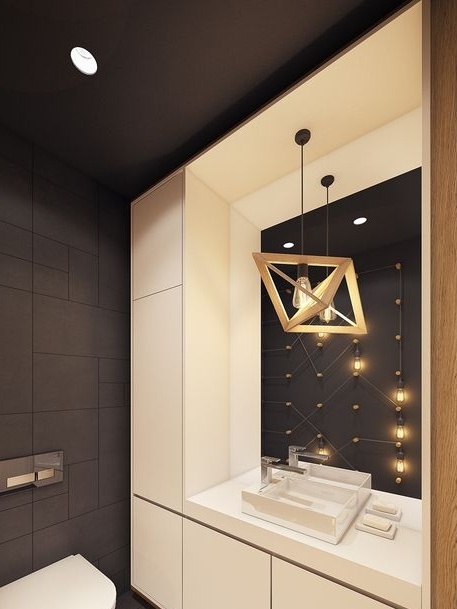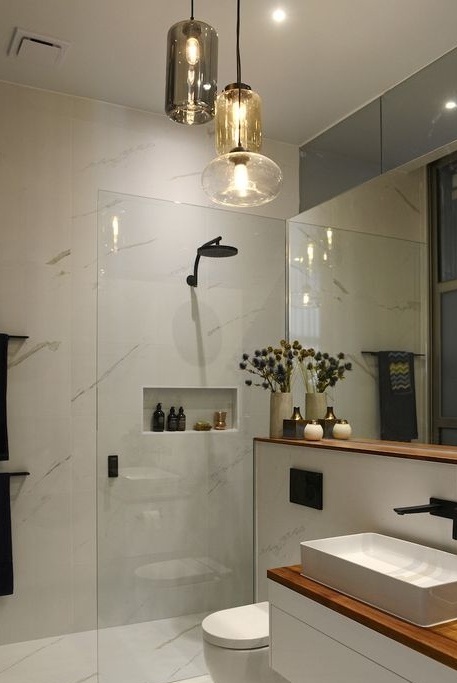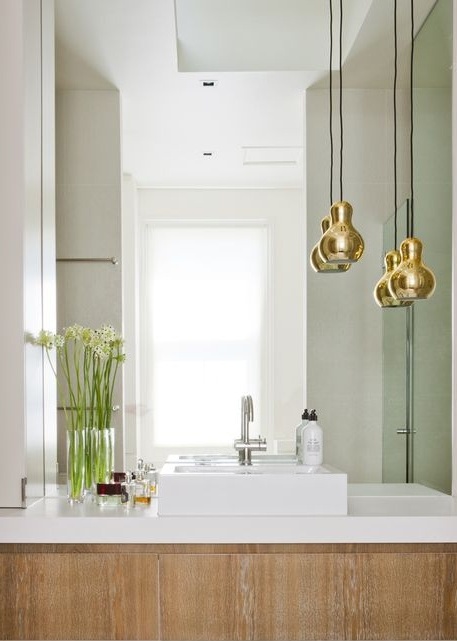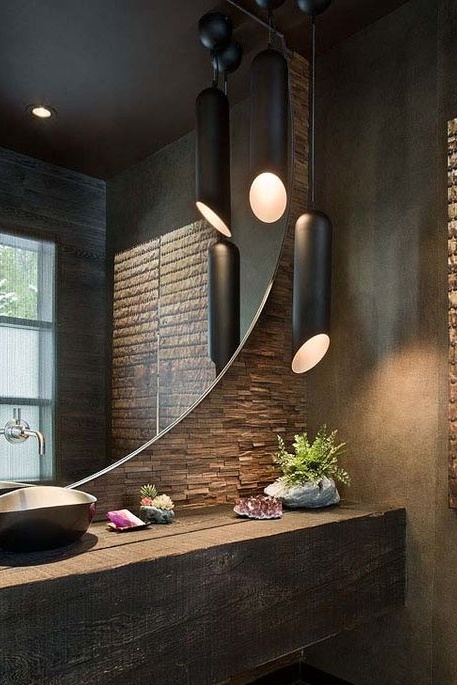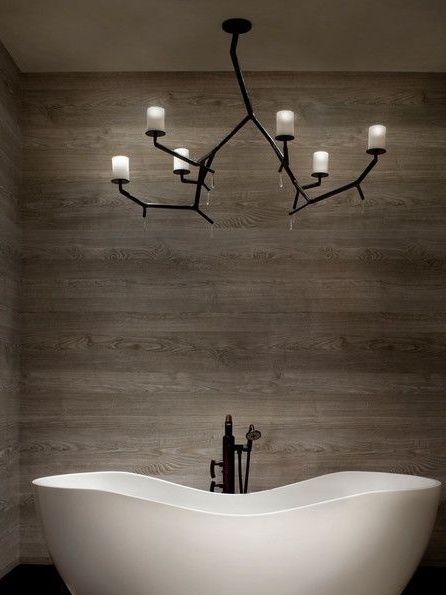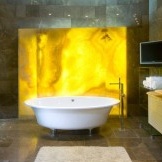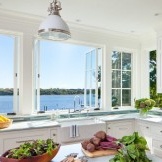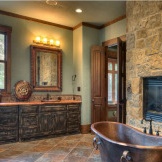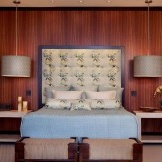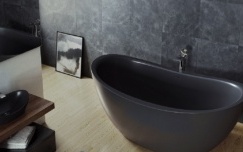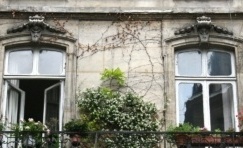Lamps in the bathroom: different types of lighting for functionality and aesthetics
Content:
- Which option to choose?
- Ceiling light
- Sconces
- Spotlights
- Mirror Lighting
- LED lamp
- Selection of luminous flux (lm) per m²
- Security Levels Required
Lighting is an indispensable element in the arrangement of the bathroom, properly selected lamps not only improve the comfort of everyday life, but also allow you to create the perfect atmosphere in the interior. An originally designed light source enhances the functionality of the room and carries the role of stylish decoration. Lighting the bathroom is a very important stage, which requires not only good taste, but also professional knowledge. In the end, a room for hygiene is not only a space that serves solely to prepare for going out, taking a shower and styling hair. This is a room where a modern person spends most of his life.
Fixtures in the bathroom: which option to choose?
A bathroom is a room in which people spend a lot of time, so it should not only be functional, but also provide a feeling of relaxation and comfort. The number of light sources should be dictated by the size of the room. The bathroom must have fixtures that belong to at least the first two types of three:
- General lighting is the main one that evenly illuminates the entire area of the bathroom. It is usually installed on the ceiling - the central part of the room serves as orienting lighting.
- Area lighting (functional), which is used for special tasks, for example, is ideal for everyday makeup or shaving.
- Atmospheric lighting (decorative) provides well-being, ideal for relaxation. This is an additional option in the location of the lighting of the bathroom.


General lighting includes situations in which you have to go to the bathroom, for example, to use the toilet, take out the laundry from the washing machine or just brush your teeth. Area lighting in the bathroom is most often used with a mirror. With it, you can make flawless makeup, shave, wash your face or perform other cosmetic procedures. The mood lighting turns the bathroom into a luminous wellness temple or provides a relaxing purple light throughout the room.
Lamp in the bathroom: ceiling version
Depending on the size of the bathroom, the preferences of the user and the actions performed in this room, you can use different types of lamps installed in certain areas. A ceiling lamp provides general lighting in the bathroom. In design, the most common here is white in combination with chrome elements. This combination gives the impression of exceptional elegance and cleanliness, so it fits almost any bathroom. Depending on your preferences, you can choose a vintage or rustic ceiling lamp for decorating the hygiene zone.
Wall lamp in the bathroom: sconce
Wall lights (sconces) are installed in the bathroom, usually by the mirror. They complement the general lighting of the room and serve to highlight functional areas. Make sure the mirror is evenly lit and the light will not blind you. The lamp should be installed at the top of the wall or at a height of 1.70 m to 1.80 m.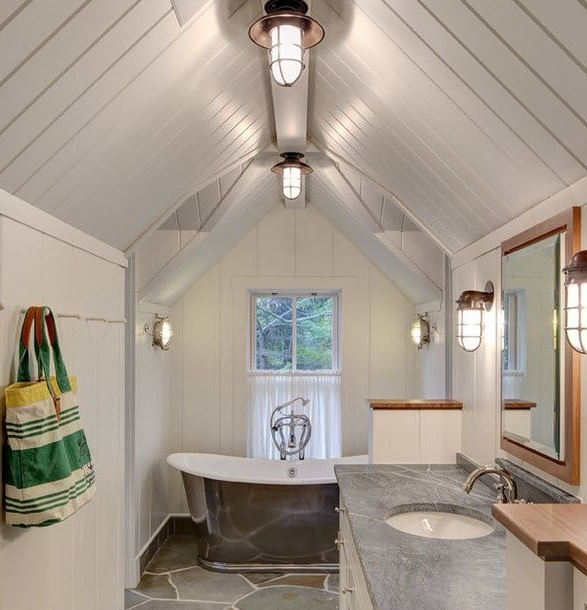
Spotlights in the bathroom: built-in elements
Especially in small bathrooms, an attractive choice is lighting, which does not take up extra space. Recessed luminaires are also readily used in the bathrooms of many hotels and pools. Reason: they look very stylish.Unfortunately, the assembly is a little more complicated because the spotlights in the bathroom require the use of a plasterboard false ceiling.
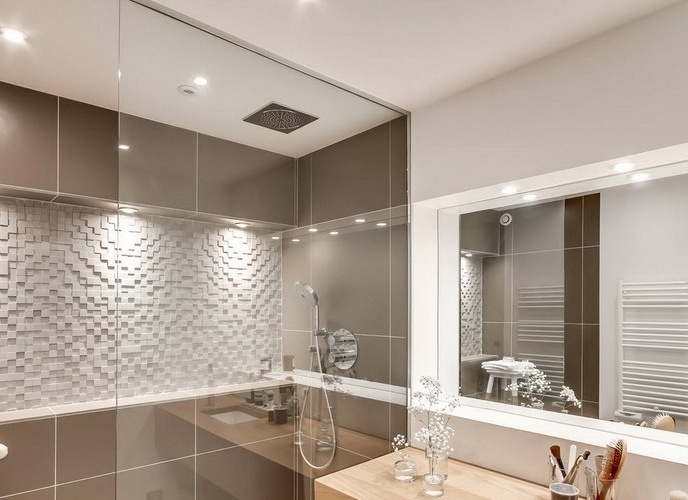
Mirror lighting in the bathroom
The need to use mirror lighting in the bathroom is explained by the fact that most often the ceiling lamp is not suitable for detailed illumination. Shadows appear on the face. Makeup done under such conditions will never be perfect, and shaving will be a daunting task. To eliminate shadows in the bathroom, an additional light source or a candlestick above the mirror is used. It should provide very good color reproduction at least and not blind, otherwise you will not be able to look in the mirror.
LED lights for the bathroom
LED lighting is also an ideal model for the bathroom, regardless of the type of lamp selected. It doesn’t matter if you choose recessed, spot or ceiling LED luminaires - all sources of artificial light for bathrooms reduce energy consumption by up to 90%, and durable technology eliminates the need for maintenance. You should always pay attention to the color rendering index, especially for LEDs that are constantly built-in, because they cannot be replaced after the due date.
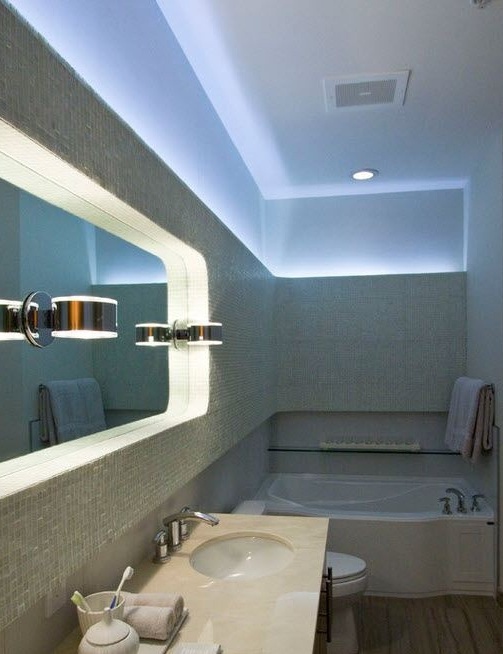
What luminous flux (lm) to choose for a bathroom per m²?
How many points or light sources do you need for a bathroom and what brightness to choose? The answer to the question is rather ambiguous, since it is necessary to take into account the properties of the room. For example, the colors of walls and tiles, the size of the area, the characteristics of furniture, etc. Lighting must be precisely adapted to the room, and what is mounted in one bathroom may become too dark or bright for another. In this case, the lighting should be well designed by a professional designer and electrician.


What levels of protection are needed to illuminate a bathroom?
Moisture and electricity are a deadly combination! In any case, without an appropriate degree of protection for the lamps used.
Important tip! Installation of fixtures in the bathroom must be ordered by an electrician. The professional knows best the rules and standards of electrical safety, which contain all the safety information in rooms with high humidity.
The bathroom is divided into different protection zones. The central point of these areas is a bath or shower. Each protection zone has special rules regarding lamps for bathrooms:
- Protection Zone 0: The inside of the shower tray or bathtub. Very low voltages up to 12 V and at least IPX7 degree of protection are allowed.
- Protection zone 1: the space defined by the outer edges of the bathtub or shower tray up to a height of 2.25 m. Very low voltage up to 12 V and a minimum degree of protection IPX4. Without a shower tray, the area covers an area of up to 120 cm around the shower head. The vertical boundary in both cases: 2.25 m.
- Protection zone 2: a distance of up to 60 cm around protection zone 1. Minimum degree of protection IPX4. In case of spraying water, for example when using massage nozzles, protection is at least IPX5.
- In addition, transformers should not be used in protective zones 0 and 1. In protective zones 0, 1 and 2, there should be no outlets and switches.

There is no denying that lighting is essential for well-being in the bathroom. Therefore, anyone who treats this room as something more than just a place for brushing their teeth and taking a quick shower should take care of equipping the room with appropriate lights. Ceiling models play a special role in this case, guaranteeing a complete illumination of the space with artificial light.
















